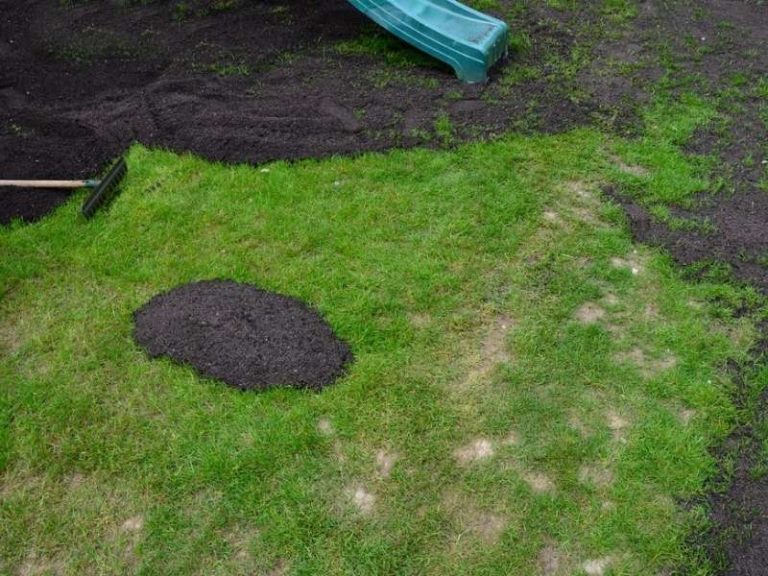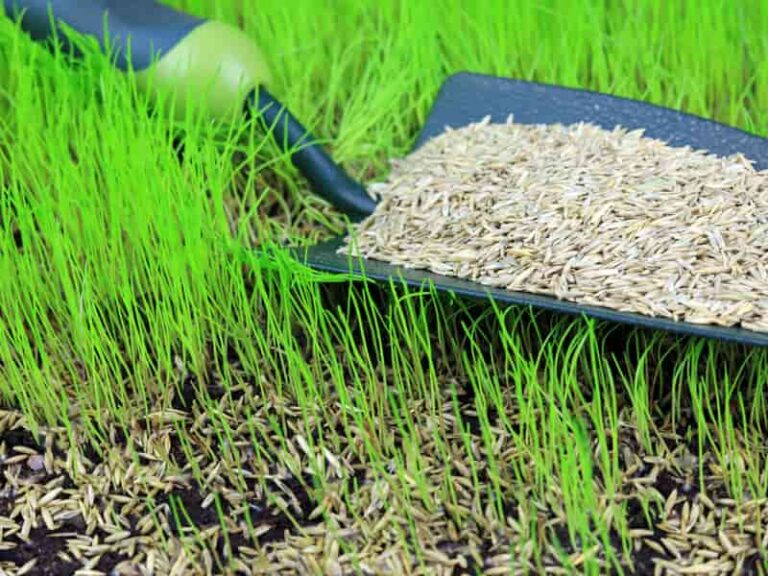How to Mow a Buffalo Grass Lawn
Imagine waking to a freshly mowed buffalo grass lawn. It’s the stuff of dreams. Growing a lush green lawn takes proper watering, fertilizing, aerating, and mowing. Once established, you can sit back and bask in the green sea of beauty you just created.
Mowing buffalograss at the right time and height could be challenging for new lawn keepers because it needs infrequent mowing, unlike grasses like bermudagrass. Cutting the grass to at least 1.5 inches using a mower with sharp blades keeps it neat and healthy.
Here are insights on mowing best practices that ensure you have the thickest, most lush buffalo grass lawn.
Can buffalograss be mowed?
Buffalograss can be mowed regularly on lawns to stay green and healthy, especially when actively growing. However, it can be left unmowed in natural landscapes.
How do you mow buffalograss?
Buffalograss should be mowed every 8-14 days in summer to a height of 1.5-4 inches tall, but once every four weeks in fall, winter, and early spring.

Buffalograss grows actively in summer. It develops stolons faster and spreads them rapidly to the surrounding area. Therefore, mow the buffalo grass more often in summer. Mow buffalo grass between 1.5 to 4 inches every eight days on higher lawns and after 14 days on natural properties in summer.
The buffalo grass turns yellow as the growth rate decreases in fall, winter, and spring. The grass channels its energy towards growing more robust under the thatch to control the changing temperatures. Also, leaf blades and stolons grow slower at this time.
Buffalo Grass’ growth rate may seem stagnant in these months. Although the growth rate varies during different seasons, it’s good to mow buffalo grass every four weeks in winter, fall, and spring.
Buffalograss is a low-maintenance grass that needs less watering, fertilizing, and mowing. Mowing buffalo grass depends on its growth rate. The growth rate is influenced by the type of buffalograss, soil nutrient and quality, weather conditions, and the time of the year.
However, the principles of mowing buffalo grass remain constant regardless of these factors.
Mow buffalo grass every 8-14 days in the summer
To keep the buffalograss lawn healthy, mow it after every 8-14 days in summer. Buffalograss has runners that spread rapidly and encroach the surrounding garden beds and sidewalks. Mowing buffalo regularly helps to control the spread of these runners. Because the grass is cut often, it concentrates its energy on repairing parts damaged during mowing rather than growing more leaves and stolons.
Cutting the grass often also helps remove small weeds from the lawn, as they are cut before establishing and reproducing seeds. Mowing grass often prevents thatch build-up.
As you often mow to keep the grass green and healthy, cut buffalograss to at least 1.5 inches.
Don’t cut the grass shorter than 1.5 inches
Mowing grass too short scalps it and exposes the turf and soil to excess heat, especially during the summer months. Too much sun dries moisture faster from the ground, leaving it dry. Consequently, the grass will need constant watering to keep the soil moist.
Mowing the grass too short slows down photosynthesis. Plants manufacture their food by photosynthesis, relying on the leaves’ surface area. Cutting the grass too short removes most leaf blades, leaving less surface area to process food.
Food deprivation makes the grass manufacture less food. It’s forced to draw stored nutrients from its roots. When the roots release stored foods, they grow weaker and can’t penetrate deeper into the soil to absorb water. Therefore, the plant becomes less resistant to drought and is easily blown away by rainfall.
Cutting the grass too short encourages thatch to grow thicker and faster, especially in summer or full sun. While thatch breaks to release nutrients to the soil over time, thatch thicker than ½ inch is harmful to the lawn. Dense thatch blocks water, air, and nutrients from reaching the grassroots. Over time, the grass weakens and turns yellowish or brown.
Thick thatch also provides a breeding ground for pests and fungus that cause and spread disease or end up with brown spots on buffalo grass.
Finally, mowing the grass too short reduces its tolerance to shade. While buffalograss requires full sun to thrive, it tolerates partial shade because it has fine-textured, broad leaves that trap sunlight and make food to sustain it in the shade.
Don’t let buffalograss grow taller.
Cutting the grass too short has adverse effects. However, letting it grow too long has disadvantages, too.
Leaving your grass long makes the lawn unattractive. Furthermore, buffalograss stolons spread rapidly and encroach on nearby sidewalks and garden beds. Stolons extending to undesired areas make the surroundings unattractive.
When buffalograss is left to grow tall for a long time, it enters into seed mode, and its leaf blades become more of weeds than turfgrass.
Long buffalo grass provides a conducive environment for weeds to grow and invade the property. The weeds compete with grass for air, water, and nutrients. Due to their aggressive growth, the weeds prove challenging to remove from the lawn. Eventually, they take over the lawn if they are left uncontrolled.
Leaving the grass tall makes mowing difficult when you decide to cut it. Long grass dulls the mower and blunts the mower blades. The grass makes the mower engine challenging to control. The turf also produces long grass clippings, which are challenging to dispose of. When these dense clippings are left on the lawn, they block the sun from reaching the grass and its roots. The sun-deprived grass thins out and turns brown or yellowish.
Long grass takes more effort and time to mow. Outsourcing the task to a mowing contractor will require you to pay more. Longer grasses allow thicker thatch to develop on the lawn. Thicker thatch suffocates the grass and prevents essential elements from reaching the grassroots. Dethatching thick thatch is more destructive to the grass when done at the wrong time with the wrong tools.
Use a power rake or a dethatcher to break thatch when the grass is actively growing to recover quickly from the stress. Long grass traps more moisture in its lower parts, creating a breeding ground for pests and diseases.
Generally, grass should not be cut too short and should also not be left to grow too tall. The best practice is to cut the grass regularly.
Remember to use the one-third mowing rule. Mow one-third of the height of grass per mowing session. Keep the mower blades sharp and the grass dry. Use a rotary mower to cut the grass instead of a cylindrical mower.
Read More: Pros and cons of Dethatching Lawn
When is the best time to mow the buffalo grass lawn?
The best time to mow buffalo grass lawn is after 8-14 days in summer when buffalograss is actively growing, but every four weeks in the other seasons when the growth rate has reduced.
What height to cut buffalograss?
Cut buffalograss between 1.5 to 4 inches, depending on the type of buffalograss.
Buffalograss grows to a maximum height of 8 inches. Don’t let it grow too tall. Cut more than 1.5 inches to avoid scalping the lawn.
What happens if you cut buffalo grass too short?
If you cut buffalo grass too short, the lawn will need frequent watering, and you will have excessive thick thatch. Pest and diseases are more likely to invade a lawn mowed too short. Cutting the grass too short also reduces the rate of photosynthesis and makes the grass more susceptible to drought and rain.
- The grass will need frequent watering. Mowing buffalo grass short exposes the turf and the soil to the scorching sun in summer, increasing the evaporation rate. As a result, the soil dries faster.
- Thicker thatch will develop on the lawn. Scalped grass encourages thicker thatch to grow on the lawn rapidly, especially in full sun. Short grasses are also prone to pests and fungal diseases.
- The grass becomes more vulnerable to drought. Cutting the grass too short reduces leaf surface area, decreasing the rate of photosynthesis. As a result, the roots are forced to release the stored foods, weakening them and making the turf more vulnerable to drought and rain.
References
- University of Missouri Extension: Establishment and Care of Buffalograss Lawns.
- Colorado State University Extension: Buffalograss.



